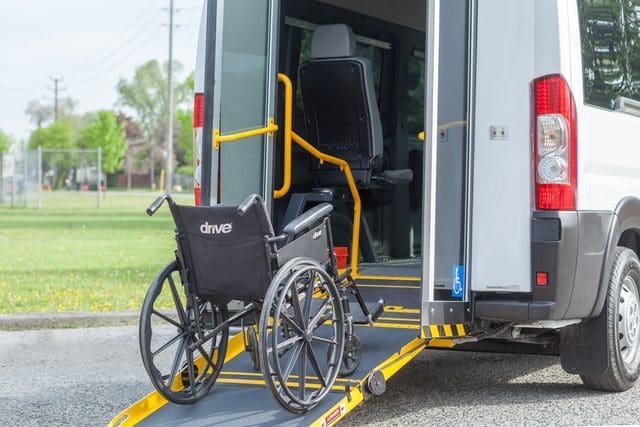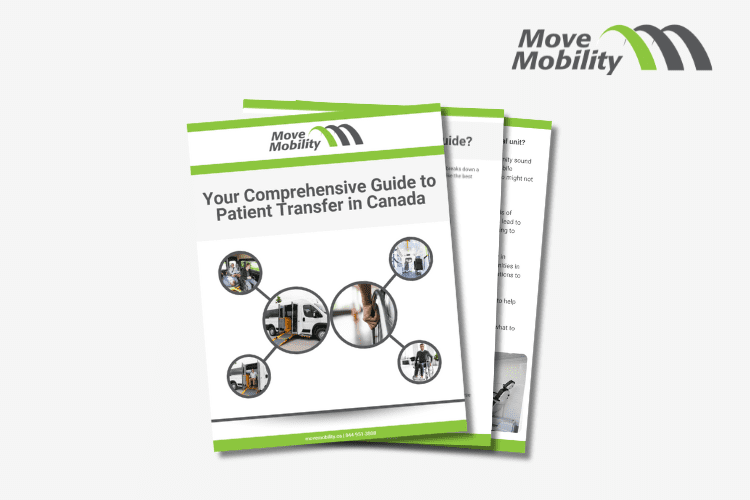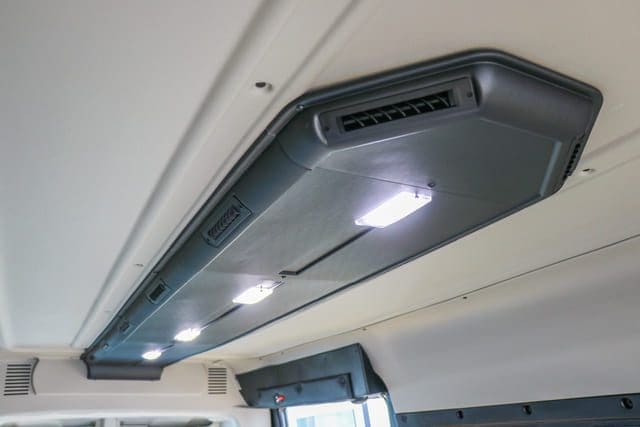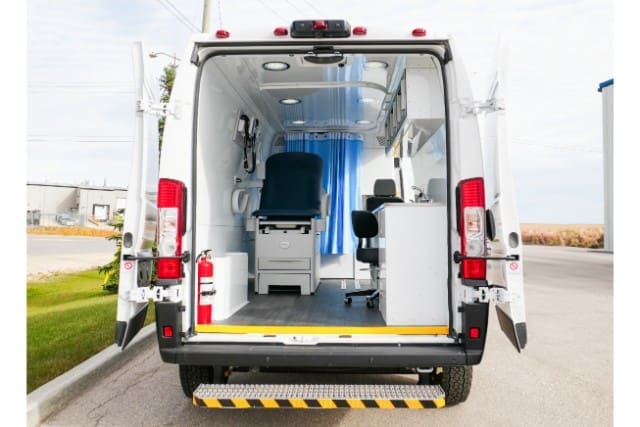A large percentage of Canadians live in rural areas and struggle to access public transit. Your organization might be feeling this pain, too. Maybe you want to offer reliable transportation for seniors, people with disabilities, or community members who can’t drive. But fixed transit routes just don’t cut it. The buses are too big, the schedules are too limited, and the costs keep rising. You’re stuck in the middle, wanting to serve your community better but not knowing how to bridge the gap.
If this gap stays wide open, people in your town could miss medical appointments, jobs, or social connections. They stay isolated. You stay frustrated. But there’s a better way. On-demand transit could fill this gap and help your community move freely again. No more empty buses driving useless routes. No more people left waiting in the cold.
At MoveMobility, we’ve helped organizations across Canada do exactly that. For over 20 years, we’ve designed and built wheelchair accessible, on-demand transit vehicles that meet strict Canadian safety standards. Our vans carry the National Safety Mark, plus Ford QVM and Stellantis QPro certifications. We know this industry, but we also know we’re not the only choice.
In this article, you’ll learn:
- What is on-demand transit?
- How does on-demand transit work?
- 5 problems on-demand transit solves in Canada
What is on-demand transit?
On-demand transit is like ride-sharing but for public transportation. Instead of running buses or vans on fixed routes and schedules, transit on demand lets people book a ride when they need it. No more waiting at bus stops in the cold or planning your whole day around a transit schedule. People simply request a ride through an app or by phone, and the vehicle comes to them. Easy, right?
Edmonton on-demand transit and Calgary transit on demand are both growing rapidly in popularity. These cities have started offering flexible rides to help people who live far from main bus routes or who need easier ways to reach work, school, or medical appointments. It’s a big help in places where regular bus service isn’t possible or doesn’t make sense.
Here’s a hypothetical example to make it clearer:
Jill lives in a quiet part of Edmonton where no big buses go. She can’t drive, and walking far is hard for her due to mobility issues. Now with Edmonton on-demand transit, she just books a ride on her phone. A wheelchair van picks her up at the end of her street and takes her straight to her doctor’s office. No transfers. No stress.
This is what makes on-demand transit so helpful. It fits around real life, not the other way around. More towns are catching on because this kind of service solves real travel problems for real people.
How does on-demand transit work in Canada?
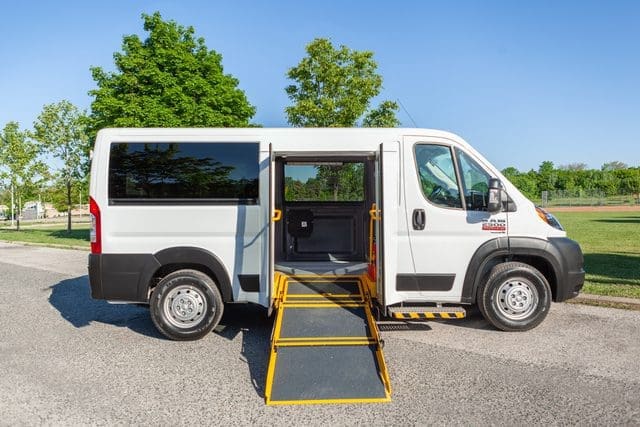
So, how does on-demand transit work anyway? Don’t worry, it’s simpler than you might think.
As we mentioned earlier, instead of running on set routes like traditional buses, on-demand transit runs when people ask for it. Riders book a trip using an app or by calling in. The system figures out the best way to pick everyone up and drop them off without wasting time or fuel. Pretty smart, right?
Here’s what usually happens step-by-step:
- Book the ride: Riders use an app or call to request a trip. They choose a time and location that works best for them.
- Get matched: The system groups requests from people going the same way. This keeps rides efficient and costs low.
- Pick-up happens: A smaller vehicle, like a van, arrives at a spot close to the rider’s home or workplace. In Calgary transit on demand and Edmonton on-demand transit, these spots are often “virtual stops” placed around neighbourhoods.
- Drop-off made easy: The vehicle gets riders to their destination without needing to follow a long, winding bus route.
What makes on-demand transit such a useful solution?
- Flexible: Riders don’t need to plan their day around a fixed bus schedule.
- Convenient: The van picks them up closer to home, which is perfect for seniors or people with mobility challenges.
- Efficient: The system reduces empty rides, saves gas, and shortens trip times.
- Simple to use: People book through a mobile app or a quick phone call, making transit on demand easy for everyone.
If you’ve been wondering how to use on-demand transit, this is it. No waiting, no guessing, no stress.
Want to see what problems this solves for communities? Let’s dive into that next.
5 problems that on-demand transit solves
Traditional public transit doesn’t work for everyone. Big buses on set routes leave gaps, and people fall through those gaps every day. On-demand transit helps fill those cracks so more people can get where they need to go, when they actually need to be there.
Here’s the first big problem that on-demand transit solves.
1. Limited access in rural and suburban areas
Regular transit service can feel like it doesn’t even exist for people living outside busy city centres. Big buses often skip rural and suburban areas across Canada because there simply aren’t enough riders to make fixed routes worth it. This leaves seniors, people with disabilities, and low-income families without a way to get to medical appointments, jobs, or grocery stores.
On-demand transit changes that.
Here’s how:
- Versatile service: Vans can go into neighborhoods and small towns where big buses can’t.
- Custom stops: Riders get picked up closer to home. No long walks to a distant bus stop.
- No waste: The system only sends a vehicle when someone actually needs a ride, keeping costs low.
Take Edmonton’s on-demand transit, for example. Thanks to smaller, flexible vans, some outer neighbourhoods that had no regular bus service now have access. The same goes for Calgary’s on-demand transit, where growing suburbs get fresh transit options.
Without transit on demand, these communities stay isolated, limited, and frustrated. But with this service, more Canadians can live life fully and independently.
2. Unreliable transportation for people with mobility challenges
Let’s face it. Public buses often miss the mark when it comes to people who use wheelchairs, walkers, or other mobility aids. Crowded spaces, steep steps, or broken ramps make the whole experience frustrating. Some folks give up on transit altogether because it feels like too much hassle.
On-demand transit makes life easier for people with mobility challenges.
Here’s how:
- Built for accessibility: On-demand vehicles are designed with ramps, wide doors, and flexible seating layouts. Riders don’t have to squeeze through tight spaces or worry about equipment not fitting.
- Closer pick-up spots: Riders don’t have to take long walks or risk waiting on the curb. They are picked up closer to their homes or buildings.
- Peace of mind: There’s no guessing or waiting. Riders book a time that works for them, and the vehicle arrives when expected.
Fort Erie transit on demand and Niagara on demand transit are already making a big difference and proving how helpful this service is. Riders in these areas, especially seniors and people living with disabilities, now have a dependable way to reach medical appointments, grocery stores, and social events without stress.
Without on-demand transit, these riders would be left out. With it, they gain freedom and control over their day.
3. Gaps in service during off-peak hours
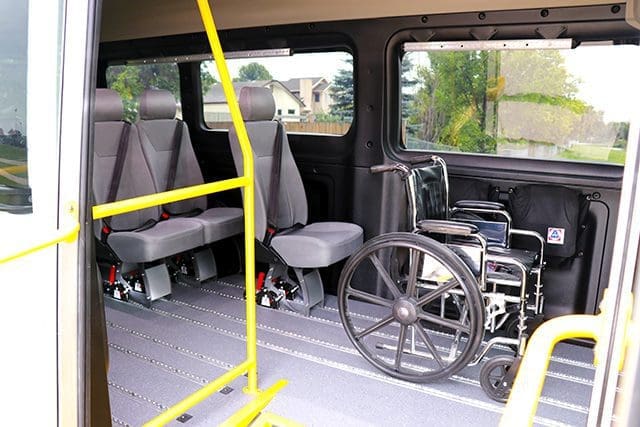
A lot of public transit systems slow down or stop running in the evenings, on weekends, or during holidays. This leaves people stuck when they need rides the most. Shift workers, students, and seniors can’t always count on regular buses to get them home late at night or to early appointments on Sundays.
On-demand transit solves this problem by running when riders need it, not just during rush hour.
Here’s why this matters:
- Flexible scheduling: Riders can book trips early in the morning or late at night, which is great for hospital staff or factory workers.
- Weekend service: No more worrying about being stranded on a Saturday because the bus stops at 6 p.m.
- Holidays covered: Some on-demand systems even operate during holidays when regular transit shuts down.
Leduc transit on demand and Guelph transit on demand are helping to close these off-peak service gaps. Riders in these areas can still get to work, the store, or family events, even when regular buses stop running.
People risk missing shifts, classes, or important appointments without transit on demand. With it, they can plan their day with confidence, knowing a ride is always an option.
4. High costs of running underused bus routes
Running big city buses on fixed routes can get pricey, especially when only a few people ride those buses each day. This happens a lot in small towns or spread-out suburbs where the demand just isn’t high enough to fill a whole bus. Cities and towns end up wasting money on fuel, driver time, and maintenance for buses that mostly run empty.
On-demand transit helps reduce these costs in a smart way.
Here’s why cities like this option:
- Smaller vehicles, lower costs: Vans and shuttles use less fuel and are cheaper to maintain than full-size buses.
- Only runs when needed: The system sends a vehicle when there’s actually a rider, instead of running an empty bus all day.
- Better for the environment: Fewer large buses on the road means less pollution and wear on streets.
Organizations and people utilizing BC transit on demand see how this can save money, especially in regions where fixed-route buses would drive around mostly empty. Instead of wasting resources, the city can focus on where service is truly needed.
If towns do not implement on-demand transit, they risk blowing their transit budgets on routes no one uses. However, with this model, they can keep costs down while still effectively serving their communities.
5. Lack of affordable transit options for vulnerable populations
For many people, especially those with low income or living in remote communities, transit costs add up fast. Paying for taxis or ride-shares isn’t easy when budgets are tight. This can mean missing doctor visits, jobs, or social activities, making life harder and more isolating.
On-demand transit offers a more affordable way to get around.
Here’s why it helps:
- Lower costs: Smaller vehicles and shared rides help keep fares down compared to taxis or private rides.
- Better coverage: On-demand services reach places where regular buses don’t go, connecting isolated neighborhoods and rural areas.
- More options: Riders can choose the times and places that fit their schedules without paying extra.
Regions like those served by Guelph transit on demand and Leduc transit on demand are seeing these benefits firsthand. Vulnerable groups get better access to healthcare, jobs, and community supports without breaking the bank.
Affordable transit options, such as on-demand services, play a crucial role in helping people fully participate in their communities. They ensure that individuals don’t fall through the cracks in the system, providing a real opportunity for engagement and inclusion.
What is the technology behind on-demand transit?
On-demand transit wouldn’t work without the right technology. It’s what connects riders, drivers, and dispatchers quickly and smoothly. Think of it like the brain behind the operation, making sure rides get booked, planned, and tracked in real time.
Here’s how the tech makes it all happen:
- Booking apps: Riders use easy apps or call centers to request rides. The app shows available times, lets riders pick their location, and gives updates when the vehicle is near.
- Routing software: This is where the magic happens. The software plans the best routes based on who needs rides and where. It combines trips going in the same direction to save time and fuel.
- Driver tools: Drivers get real-time instructions on their devices. They see who to pick up, where, and when. This keeps things on schedule and helps avoid delays.
- Communication systems: Riders and drivers can message or call each other if plans change. It keeps everyone in the loop and reduces confusion.
- Data tracking: Transit agencies get reports on rides, wait times, and vehicle use. This helps them improve service and plan for future needs.
With this technology, your operations will run more smoothly and efficiently, resembling a well-oiled machine. It ensures that everyone reaches their destinations in a timely manner, making the entire system feel organized and reliable.
Ready to learn more about on-demand transit?
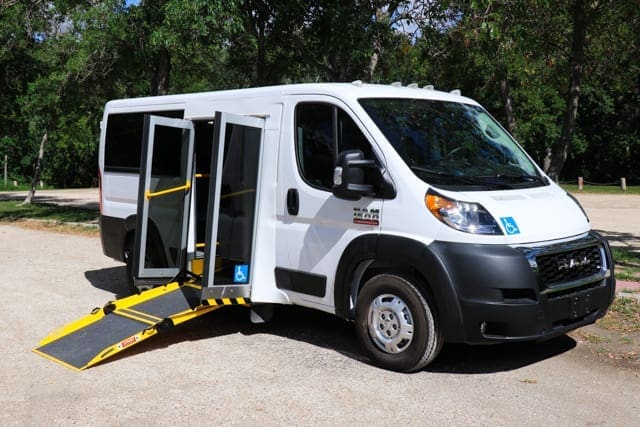
You came here because you wanted to understand how on-demand transit can solve transportation problems in your community.
After reading this, you now know:
- What on-demand transit is and why it’s changing the way people get around
- How the technology behind it keeps things running smoothly and saves time
- The key problems on-demand transit solves, from accessibility to cutting wait times
At MoveMobility, we design and build wheelchair accessible vehicles that support innovative transit solutions like on-demand services. With over two decades of experience, we help organizations like yours bring accessible, efficient transit to their communities. Our custom vans and mobile medical units are built with care, designed for real people and real needs. We’re proud to lead the way in making transportation easier and more inclusive for everyone. If you have questions, click the button below to chat with one of our mobility experts.
If you’re not ready to talk just yet, check out these helpful articles to learn more and get closer to your next step:
Start by reading our article on some considerations to consider when choosing a vehicle for your transit program.
After that, check out our case study on the Rocky View handi-transit program.


